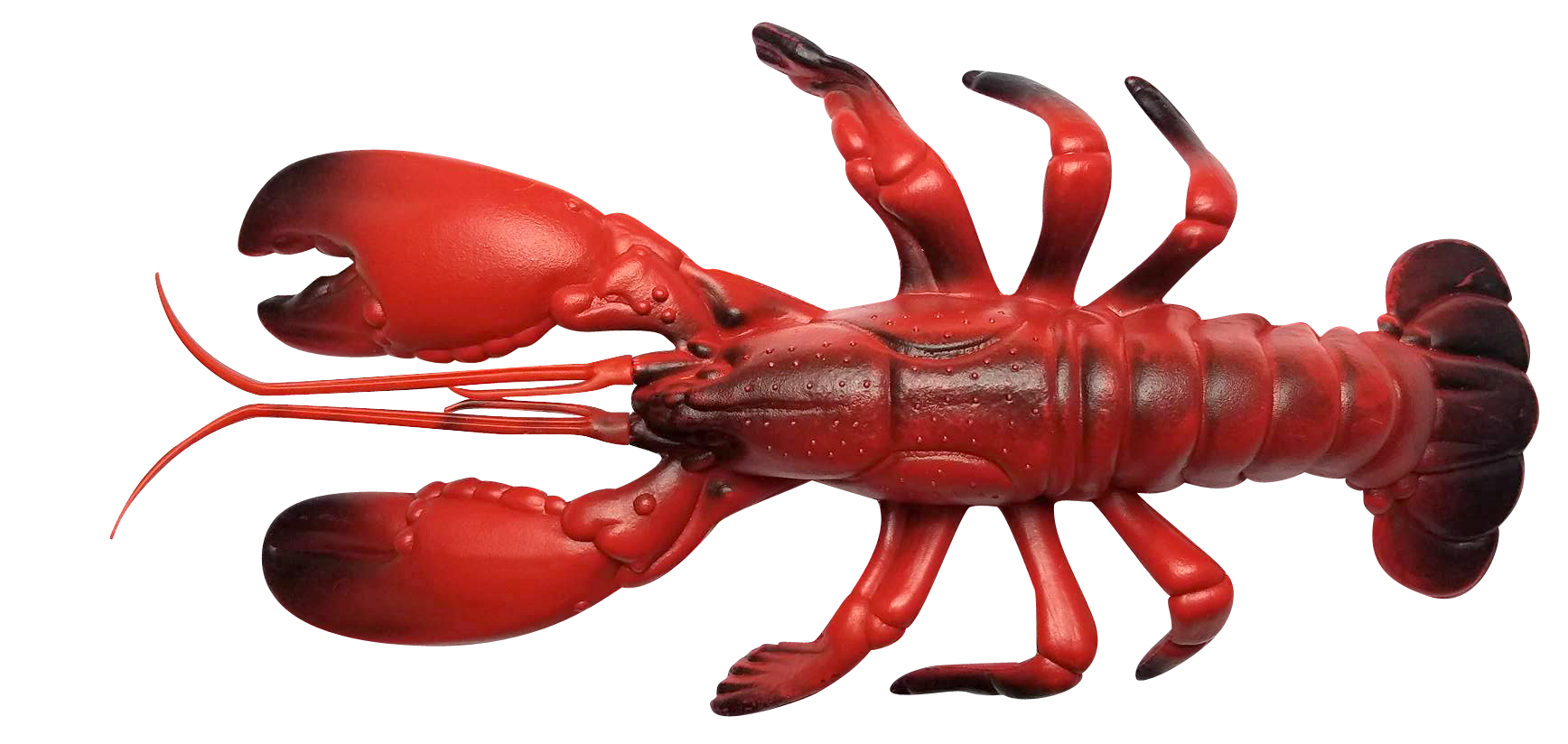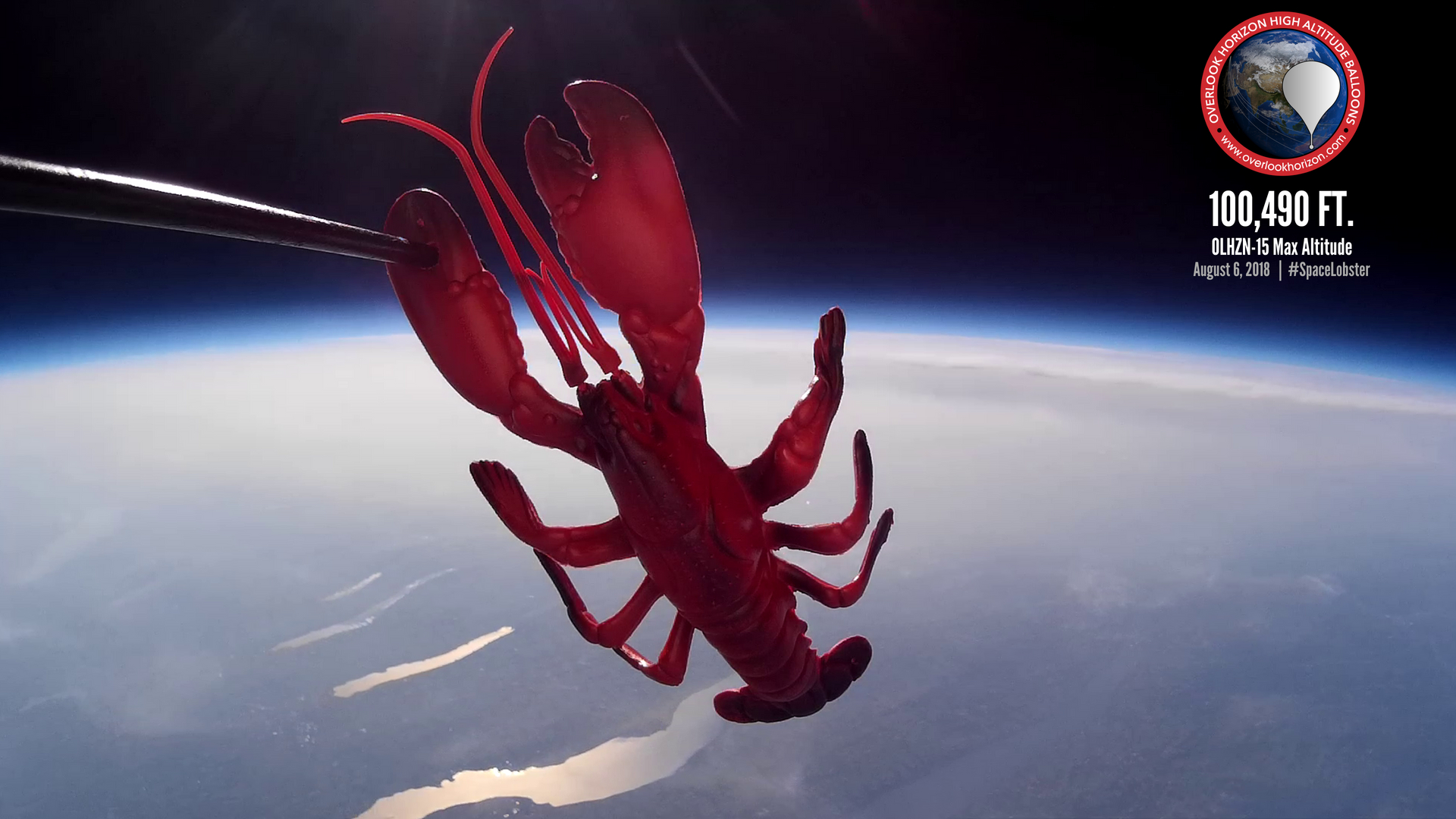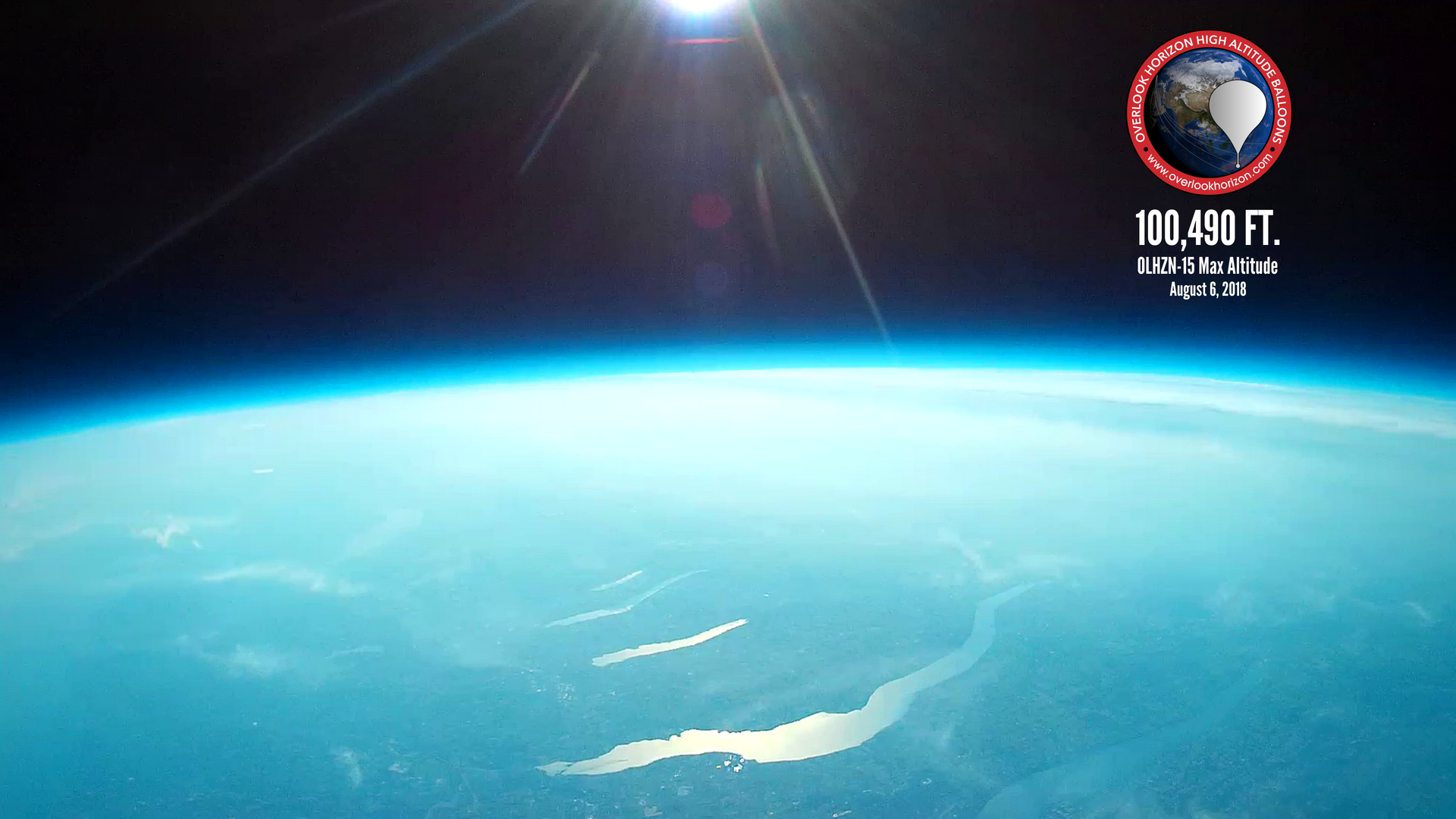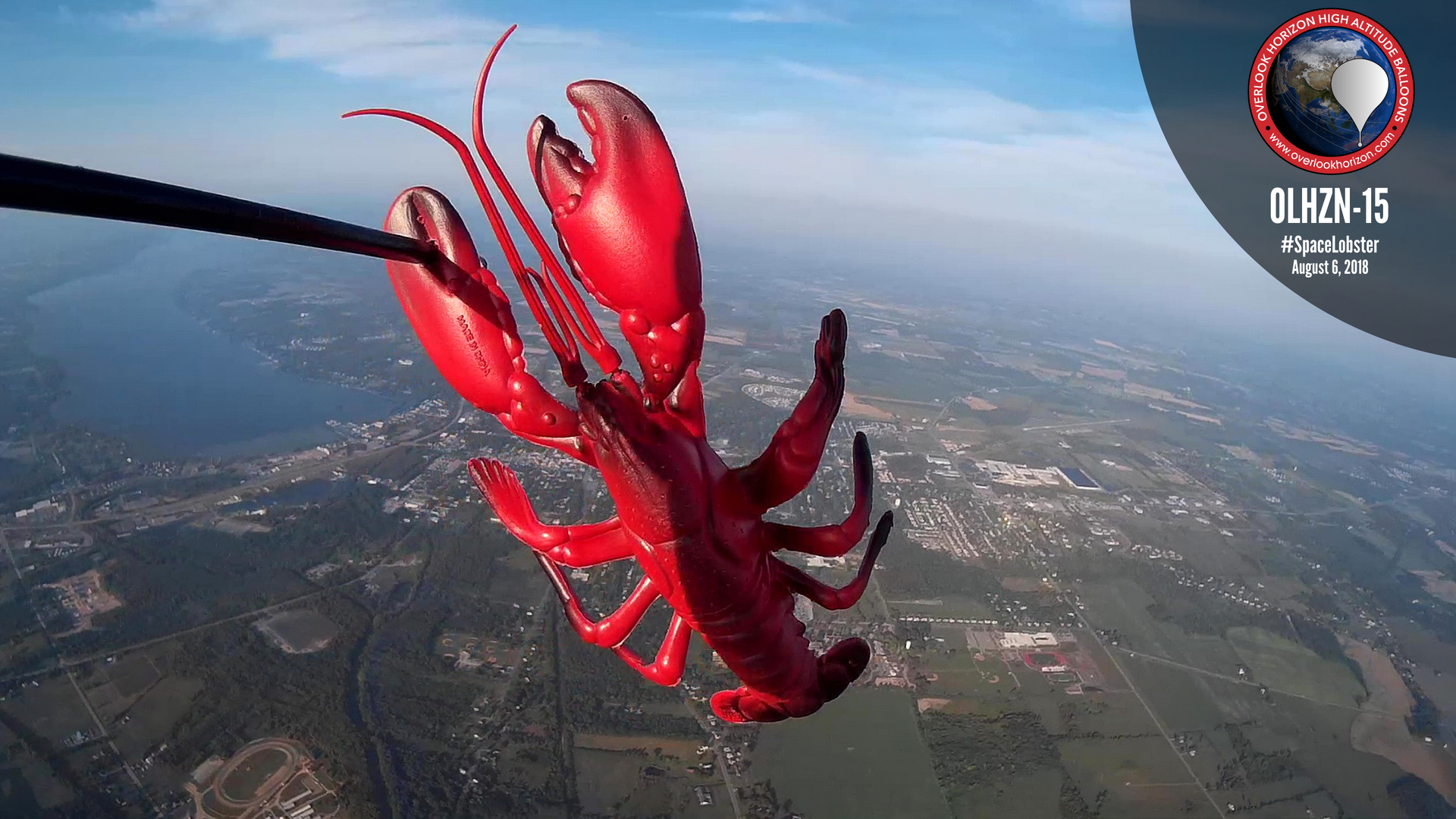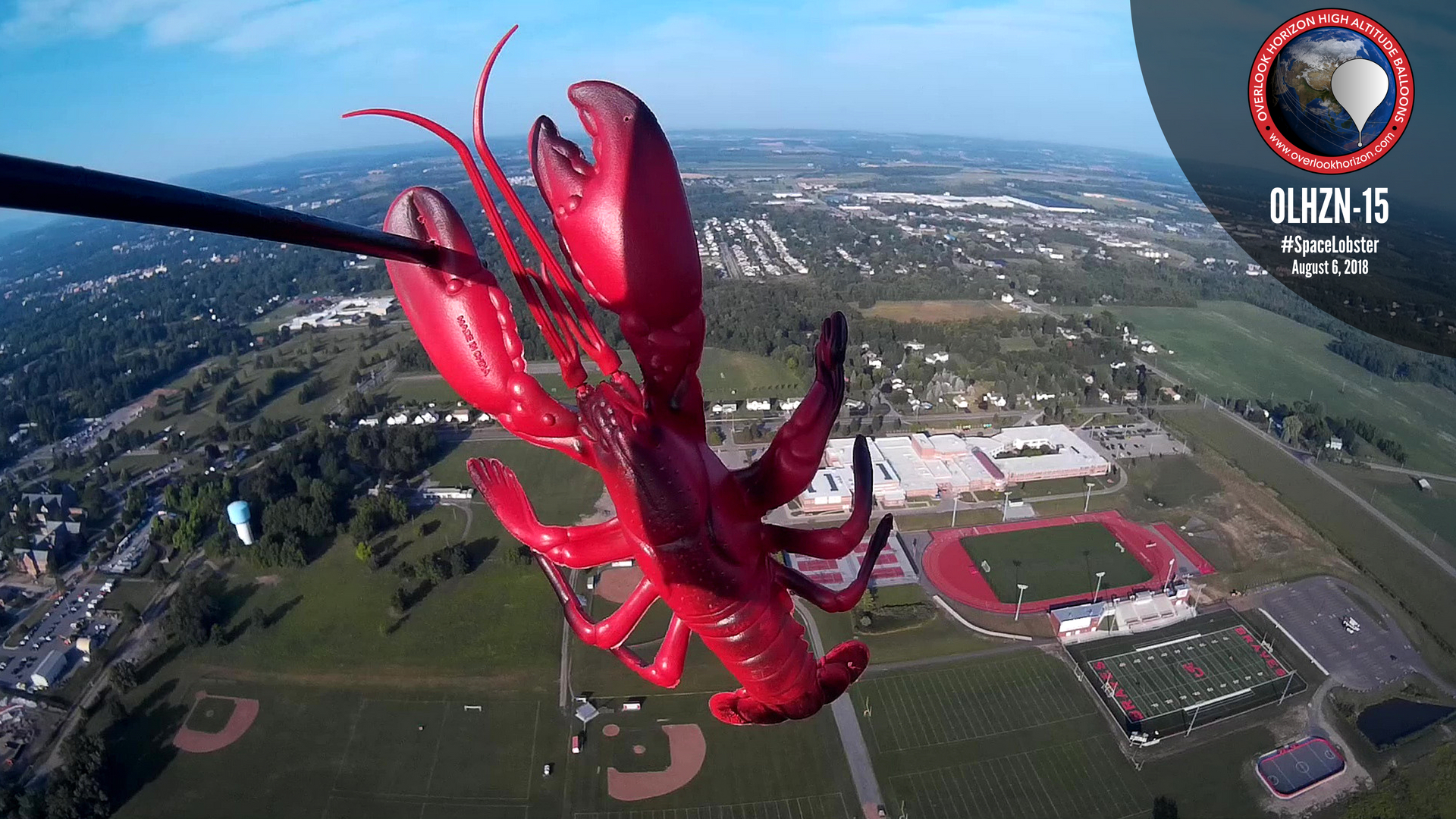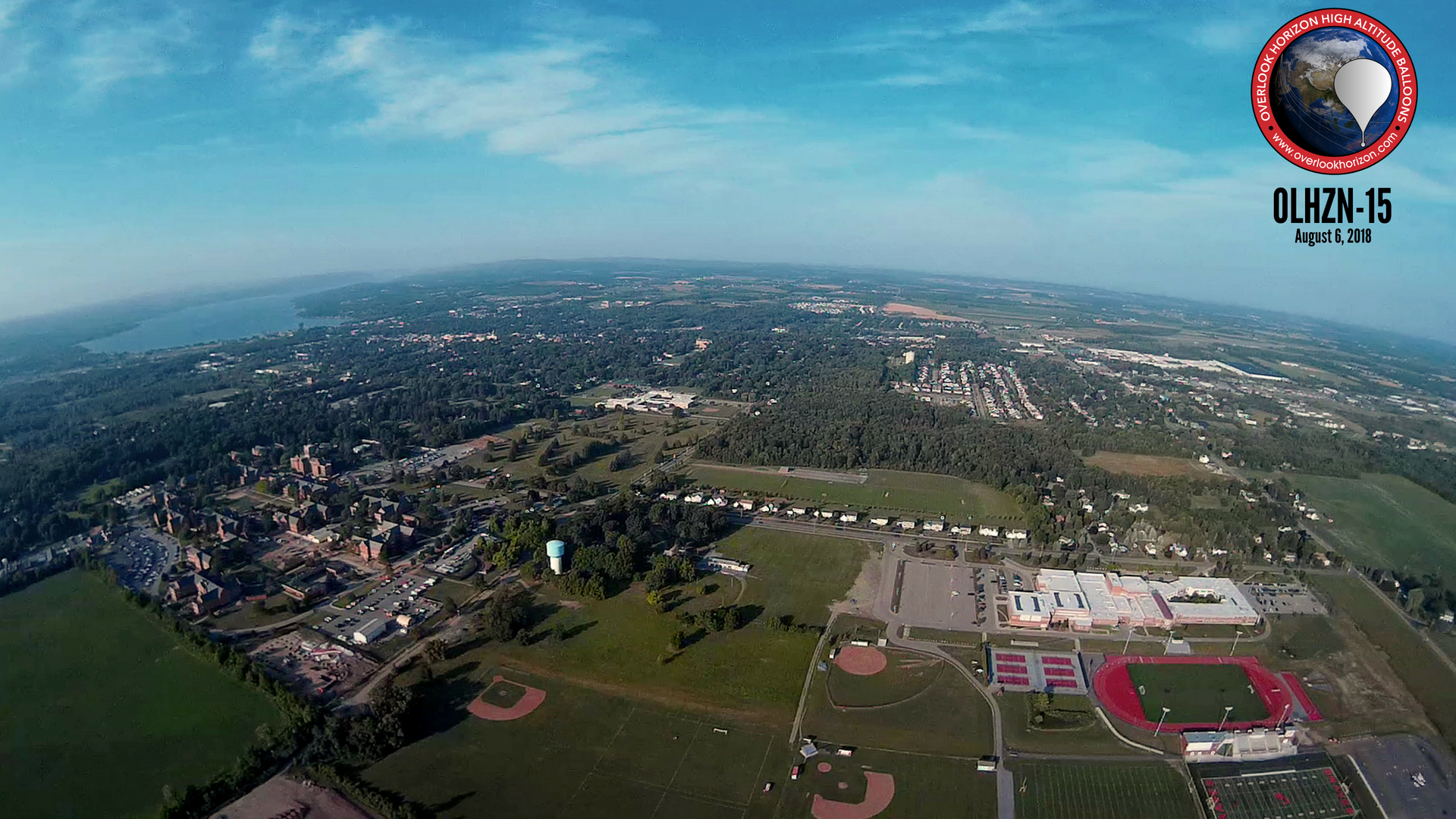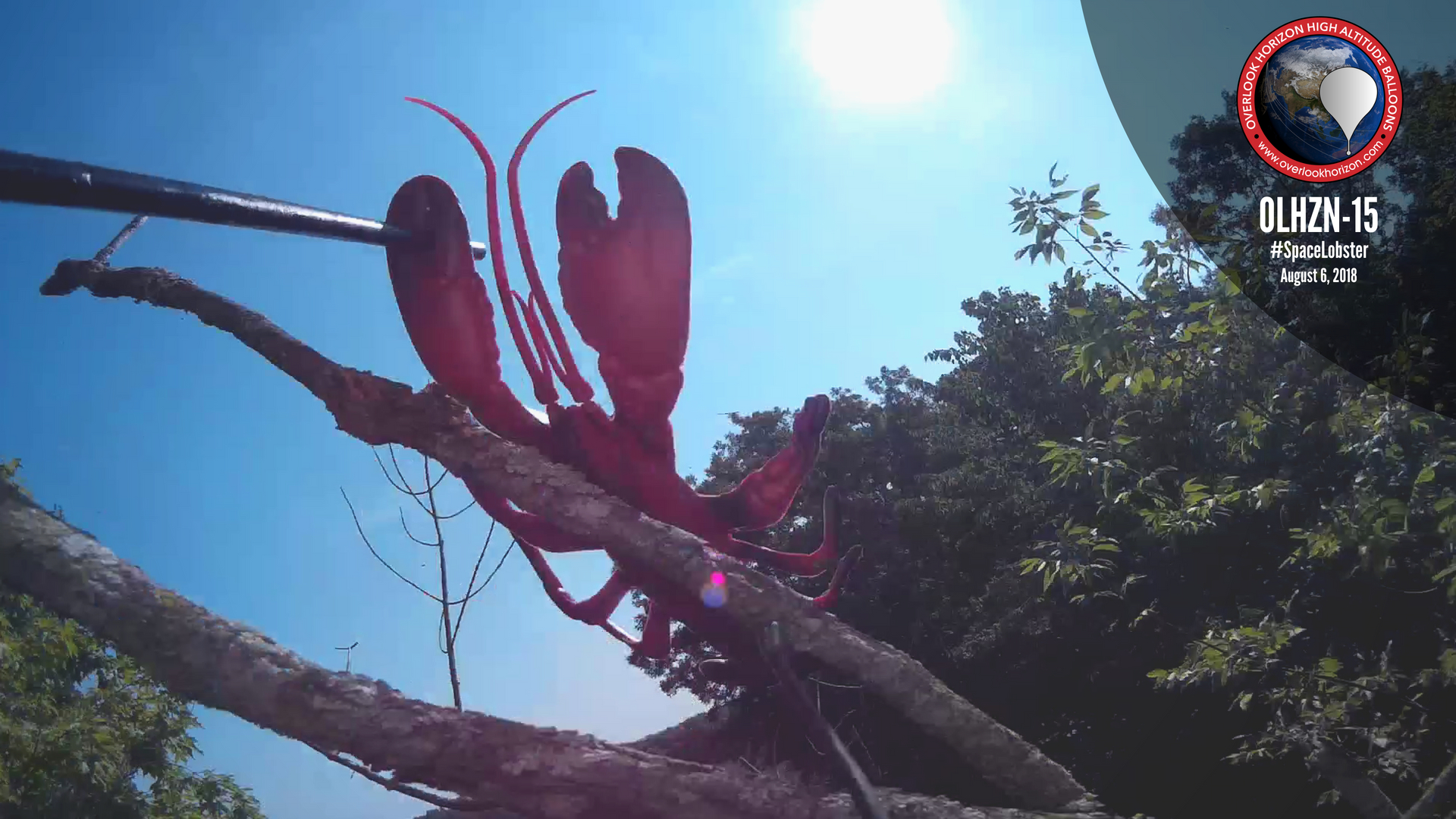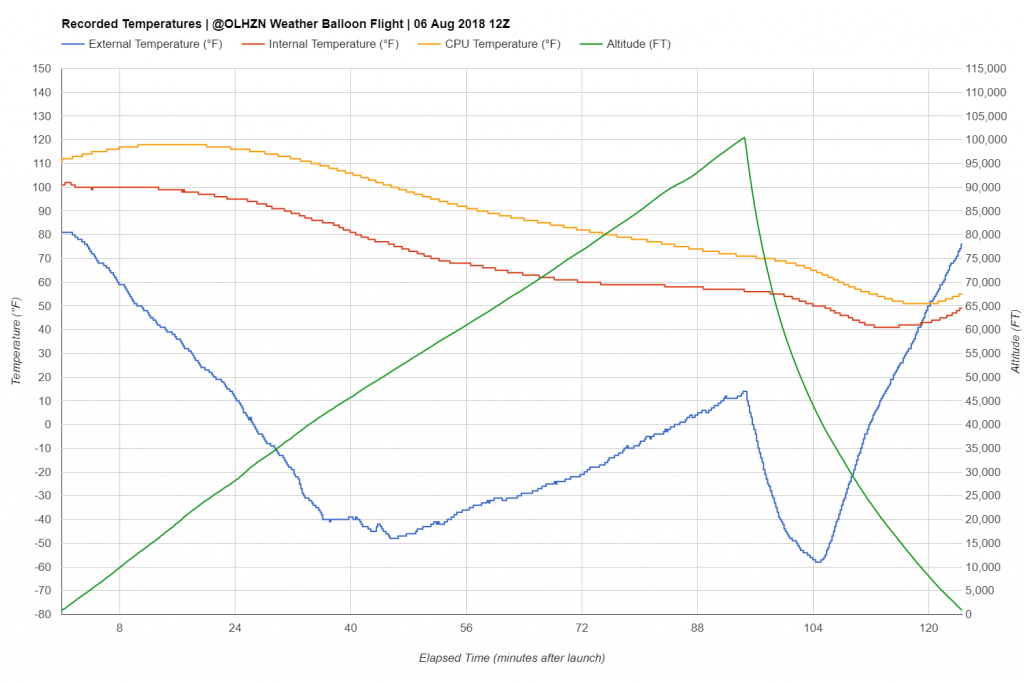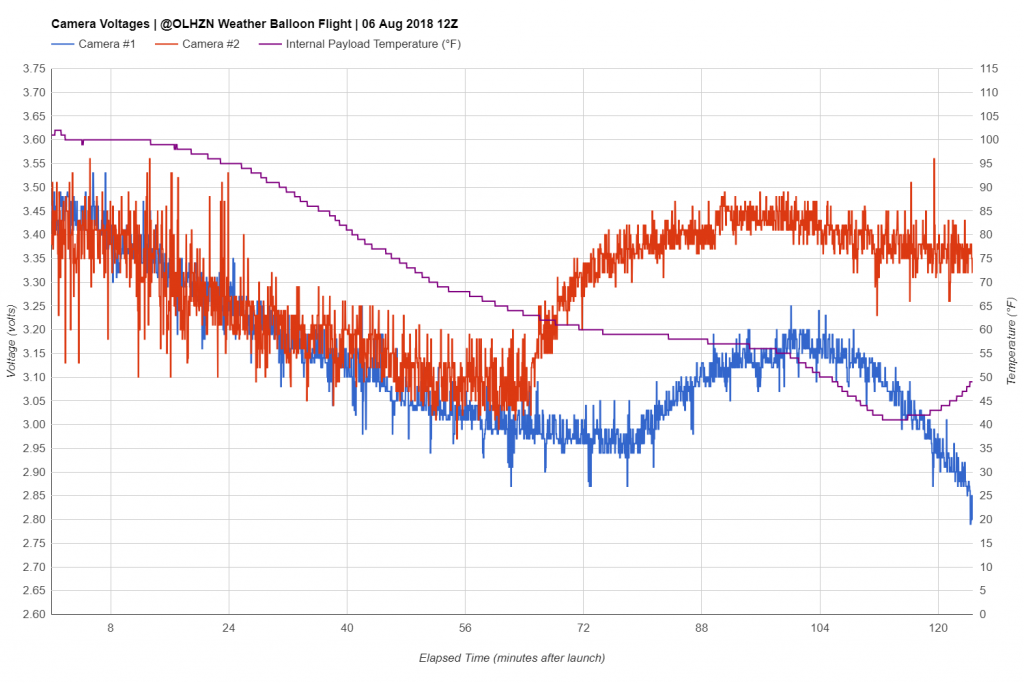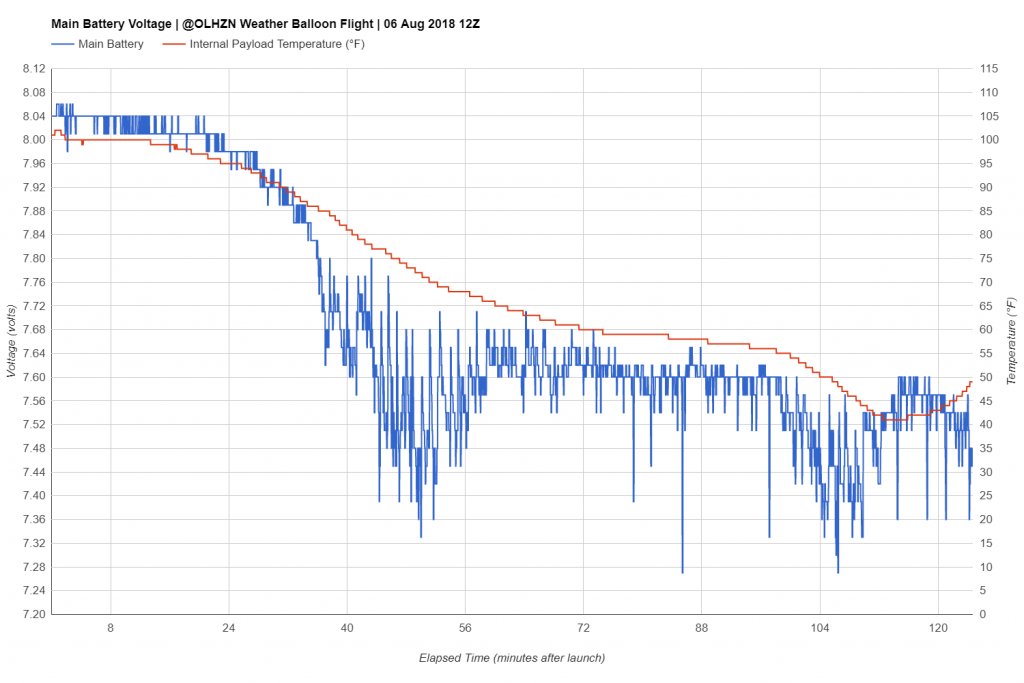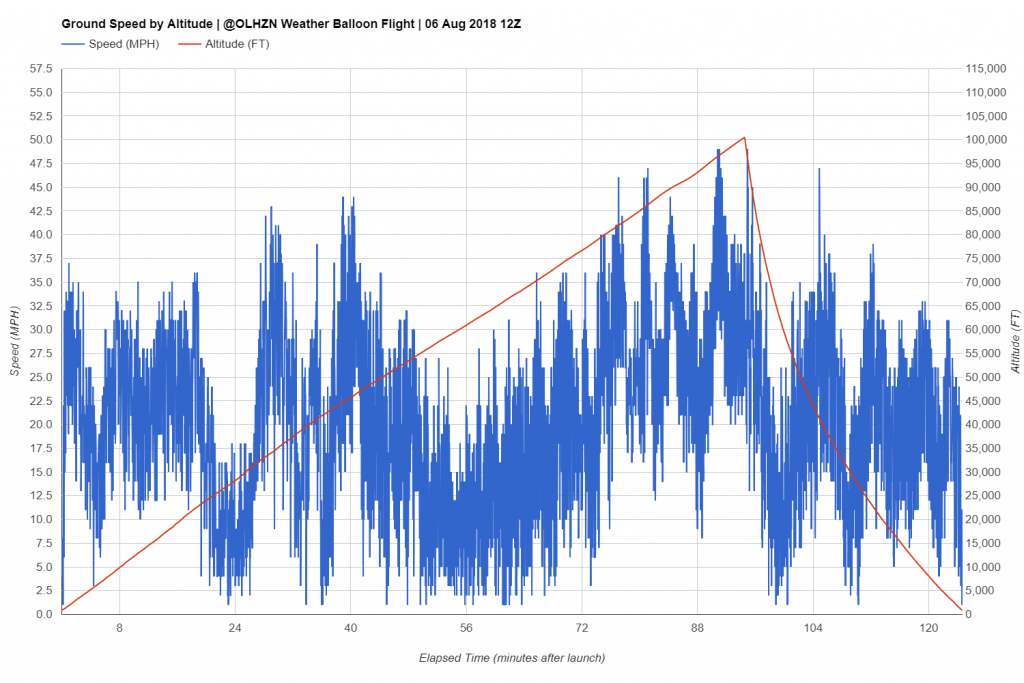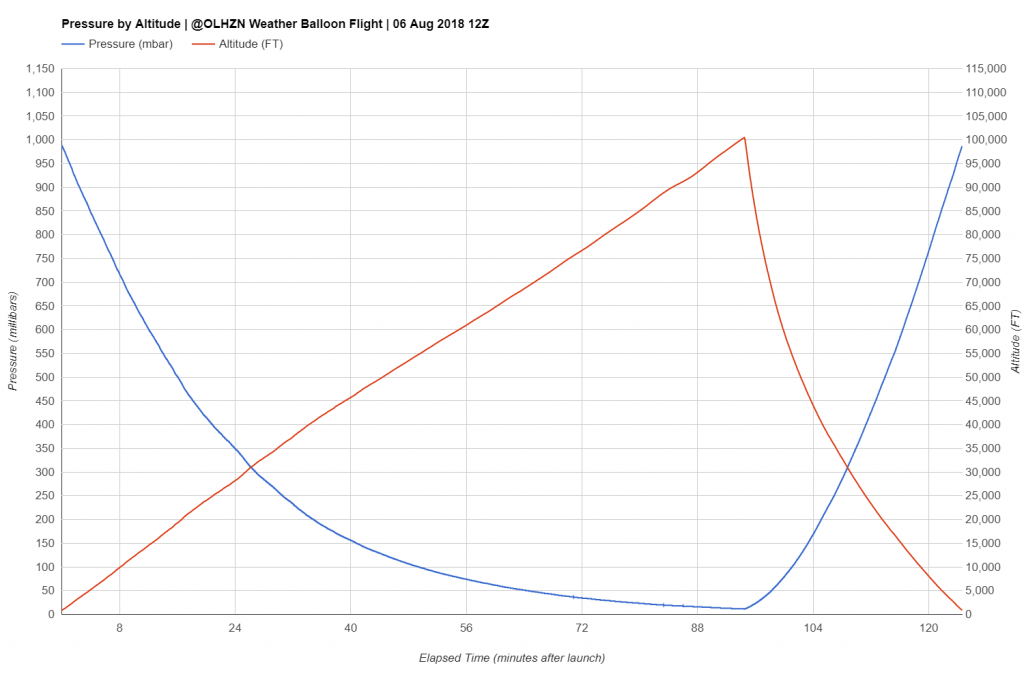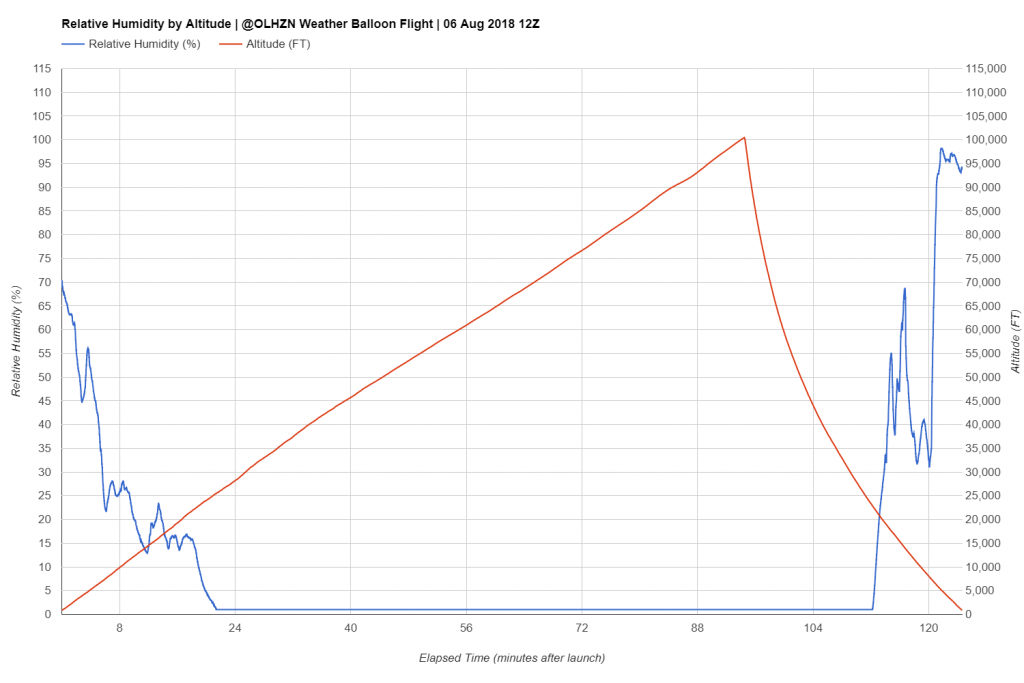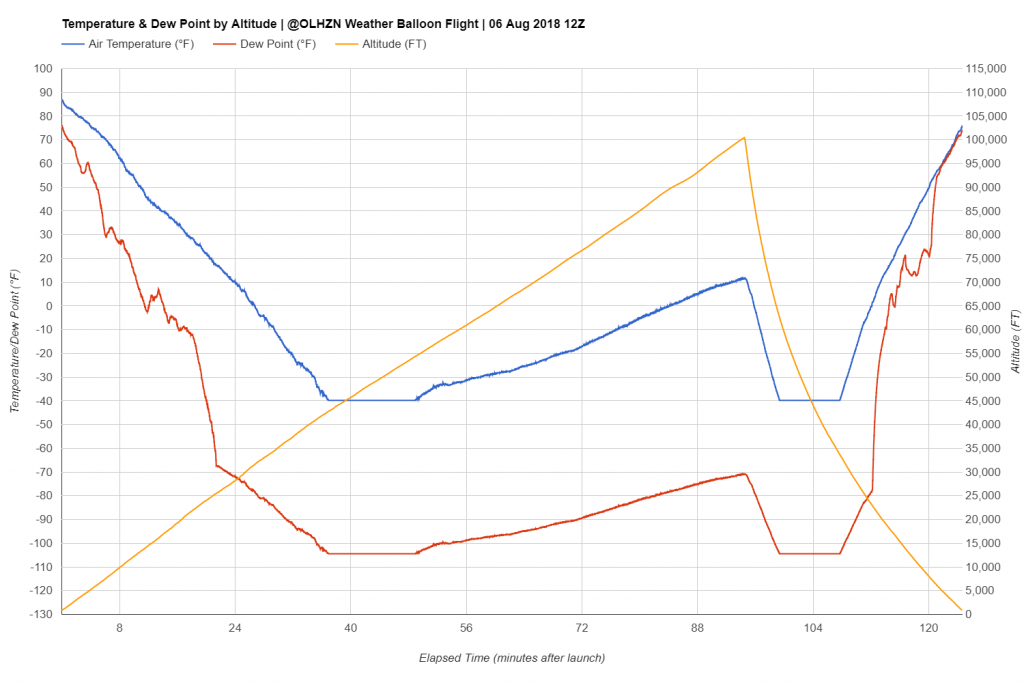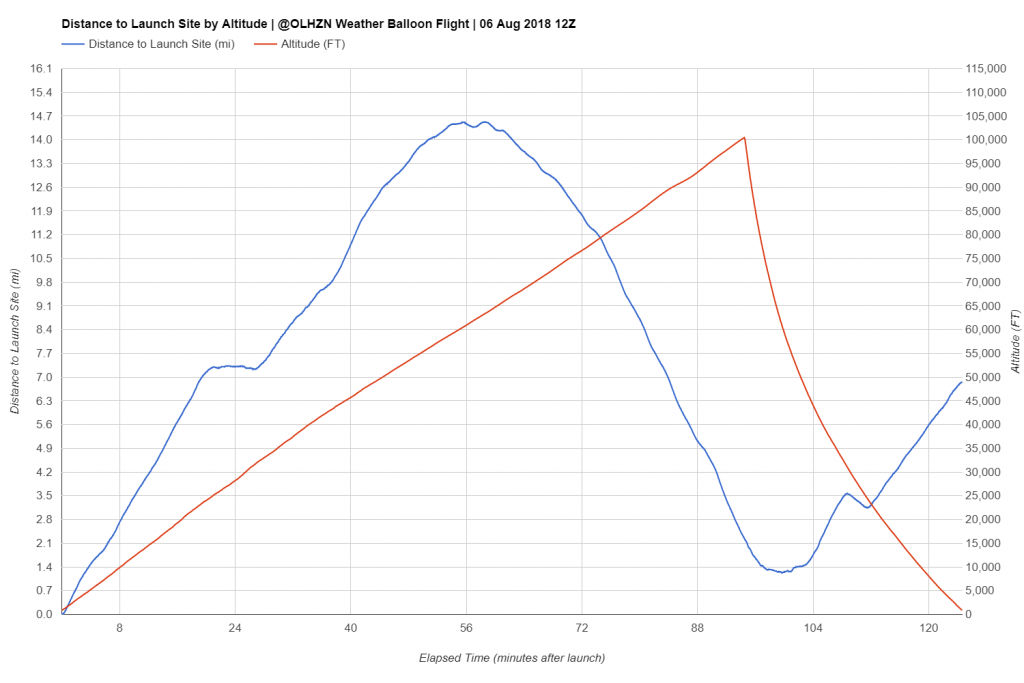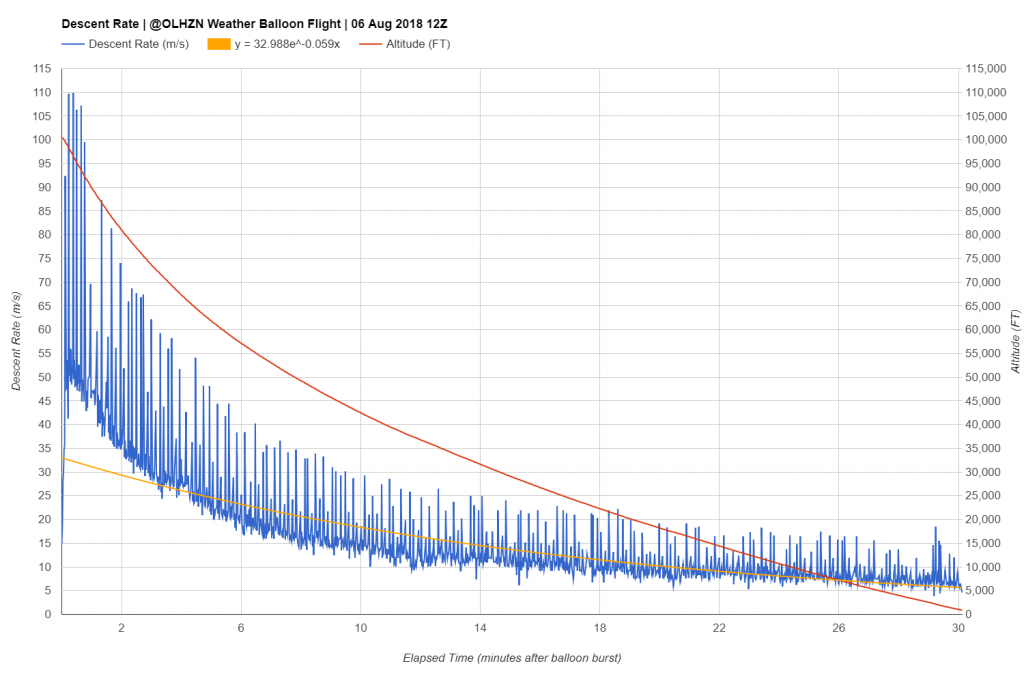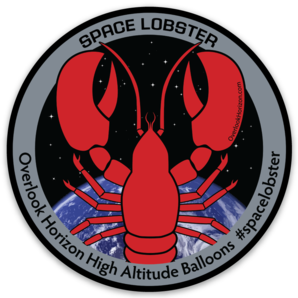OLHZN-15 was the fifteenth high altitude weather balloon flight for Overlook Horizon High Altitude Balloons. This flight launched on August 6, 2018 at 8:00am EDT (12:00 UTC) and featured our brave Space Lobster on-board as our second on-board mascot. Previously, our Space Referee launched on OLHZN-4. This flight used three Lightdow LD4000 Cameras to document the journey to the edge of space and back which will give us one view with the Space Lobster clearly in view, another view without the Space Lobster and a third view of the balloon.
Our brave little #SpaceLobster will be auctioned off at the conclusion of this flight to help raise money for our non-profit science education programs and high altitude balloon flights. If you’d like to take this little guy home, consider placing a bid on our Space Lobster Auction Page. Bidding starts now and lasts through August 31, 2018.
Flight Day Story
Building on the success we’ve had throughout all of 2018, OLHZN-15 was also a complete success from launch to landing. The early morning countdown procedures operated all perfectly and according to plan. Our liftoff occurred exactly at the intended moment of 8:00am EDT (12:00 UTC) after a beautiful sunrise and into clear blue skies with a tiny bit of haze. Our flight computers all operated perfectly throughout the entire flight.
We can’t really control this too much, but our weather balloon burst much earlier/lower than expected. This flight used a 1500g weather ballon, but should typically get us to an altitude between 108,000 FT. and 115,000 FT. Instead, this flight ascent terminated at 100,490 FT. which was surprising and slightly disappointing considering that both OLHZN-13 and OLHZN-14 used smaller balloons and still reached a higher altitude. The camera facing the balloon captured a pretty “normal” burst event, meaning that no obvious balloon defect appeared to be the cause of the early burst so it just is what it is for this flight.
The descent phase of this flight was also relatively normal, however, we did experience some extreme spinning shortly after the balloon burst. It is pretty typical for our payloads to spin a bit, especially during descent, however, the spinning observed on this flight was more than we’ve ever observed before and was intense! We expected that the lopsided weight of the #SpaceLobster likely contributed to this spin rate. Fortunately, the #SpaceLobster was well secured and was able to endure the entire descent, including the rough landing into a 80 ft. tall tree.
Recovering the payload out of the tree was certainly the hardest part of this flight. The forest canopy was quite thick which made it tough to see the payload or get a clear path for recovery tools and lines to try to free the payload. After several hours of attempts, it was an accidental light shake on the tree branch that ended up freeing the payload to our surprise. We were merely attempting to test the strength of a particular tree branch that was close to the payload and somehow it shook the payload enough to cause it to casually descend from the tree tops like as if it was being slowly lowered by hand. Unexpected and crazy, but we’ll take it!
Overall a great flight with great imagery! Our brave little #SpaceLobster is now being auctioned off to a new home. We’ll miss this brave little guy, but the proceeds from that auction will help raise funds for our non-profit science education programs and high altitude balloon flights. If you’d like to take this little guy home, consider placing a bid on our Space Lobster Auction Page. Bidding starts now and lasts through August 31, 2018.
Data Collection
Flight Path Prediction
The map below shows our predicted (purple) flight path vs. our actual (orange) flight path.

